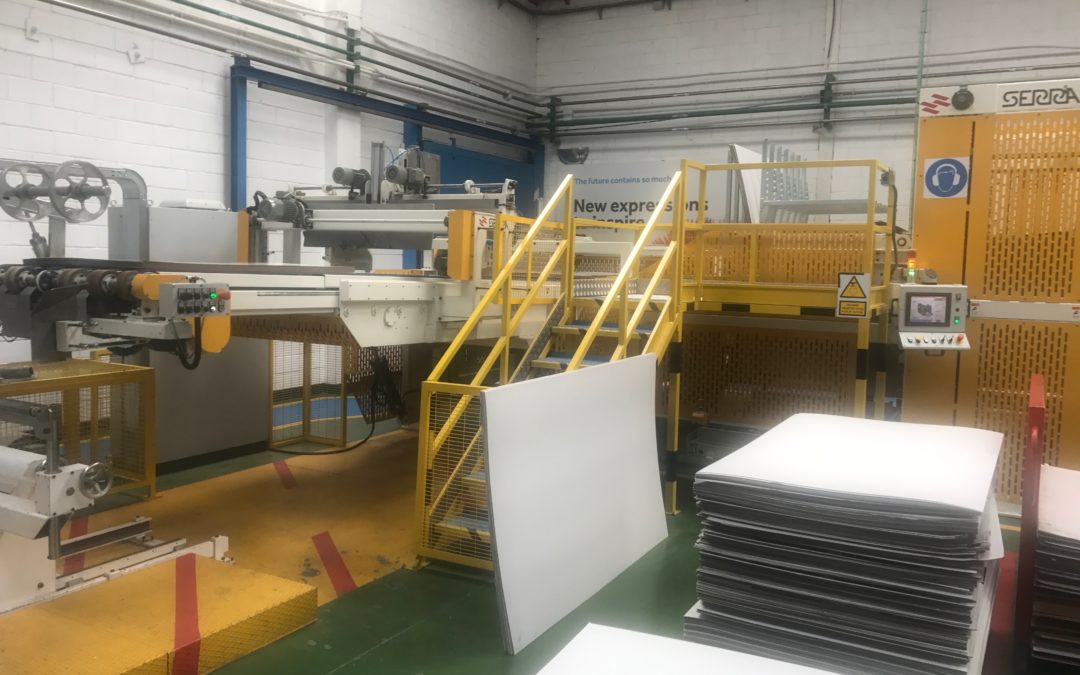With single-pass digital inkjet printing on combined corrugated board going mainstream, it is time to expand considerations of how to integrate such a production tool into the corrugated box plant.
Careful analysis of the business to be realized on this exciting new tool is an important first step. Many digital printing presses, due to the cost of hardware, feature a narrow width, but very deep kick dimension. Does this mean we anticipate feeding cross corrugation?
Add to that the fact that inkjet printing currently is done from the top; all the machines currently available are top printers.
This means sheets have to be inverted. Ideally these are lighter construction sheets, taking full advantage of the reduced crush from not printing with plate pressure. These lighter sheets, particularly if long in the corrugator cut-off dimension, will easily false crease and buckle when inverted.
Even where a decision is made to hand feed a single pass digital press, an automated and full-size load turner may be advantageous, in order to reduce the risk of damage to sheets.
The printer stacker has to handle the cross-corrugation sheets delicately, not to add to the false scoring risk. Depending on the downstream converting process, a load turner can be integral to the down-stacker.
Are the majority of inkjet printed sheets being converted “face-up”? On a platen die cutter or in-line case-maker? Or do they have to be inverted back to face-down?
If the majority of the business goes to standard converting equipment, sheets may be standard / with corrugation lay-out and smaller. Fully automated turning can easier be incorporated into pre-feeders and stackers built for the purpose.
The average order size, in pieces or number of stacks and in square feet, both, is also of importance. Not only do we have to lay out storage conveyors accordingly, but cycle speeds of automated equipment come into play. One key advantage of digital print over analog print is the reduced emphasis on set-up / make-ready downtime. Automated equipment may add artificial additional downtime. That only makes sense if runs are of sufficient length. Conversely, feeding thousands of sheets manually may increase damage and waste, and certainly increases labor dollars.
Please remember the value of the stock to be converted on such a printing press. It likely exceeds the value of the average corrugated board in the plant by a significant margin. Also, additional materials –other than corrugated board- may have to be printed, and therefore find their way into the material flow.
Of course, investors in in this new technology want to preserve great flexibility in the ability to convert a wide range of product and sizes. However, an effort to better define the business will lead to a purpose engineered solution that yields lower variable costs, yet. Professional help may be beneficial.

